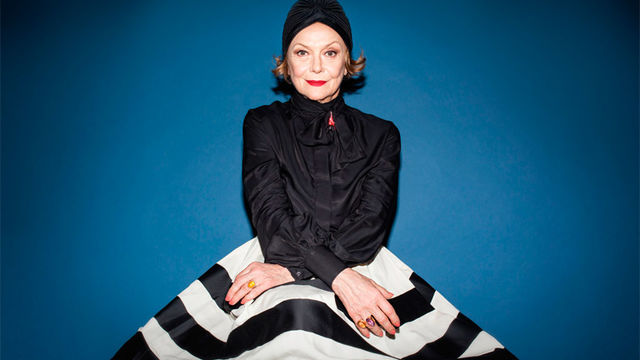
Marilú Marini
María Lucía Marini, better known as Marilú Marini, was born in Mar del Plata, Argentina, in 1945. An actor, dancer, and choreographer, Marini began her career as a contemporary dancer in Buenos Aires, where she studied with Renate Schottelius, Roberto Athayde, and Alfredo Arias, among others. Along with fellow dancer Ana Kamien (b. 1935), she was a member of a group of artists who gathered and presented at the progressive Instituto Torcuato Di Tella. Under the auspices of the institute, Marini and Kamien created the psychedelic Danse Bouquet (1967), and while at the institute she performed in Ciruela chata (Prune Flat), a 1966 adaptation by Marta Minujín (b. 1943) of a happening by the American artist Robert Whitman (b. 1935). While Whitman's film was being projected on a screen, Minujín, Marini, and Marucha Bó (1938–2013), who were all dressed in white, mirrored in front of the projection the movements of figures shown in the film. As a consequence, the bodies of the figures in the film were also projected onto the bodies of the three performers onstage.
In 1975 Marini moved to Paris, where she continued her career as a theater and film actor. In France she was part of the group TSE, originally founded in 1968 by the theater producer Alfredo Arias in Argentina. Marini has always kept ties with Argentina, often restaging in Paris plays for a Spanish-speaking audience. She has had important roles in Argentine films; her first feature film was the movie Mentiras piadosas (2008) by the director Diego Sabanés, based on a story by Julio Cortázar. Marini has been awarded many distinctions, including the 1984 Prix de la Meilleure Comédienne for her role in the play La femme assise, given by the Syndicat de la Critique Dramatique, and in 1999 she was nominated for a Molière Award for best female comedian for her roles in Le frigo and La femme assise. The highest honor given to Marini has been the insignia of Commandeur of the Ordre des Arts et des Lettres, awarded by the French government.
—Marcela Guerrero
Selected Performances
1965 Danse Bouquet (choreographer with Ana Kamien), Instituto Torcuato di Tella, Buenos Aires
1966 Ciruela chata (Prune Flat) (performer), Instituto Torcuato di Tella, Buenos Aires
1966 La fiesta hoy (choreographer with Ana Kamien), Instituto Torcuato di Tella, Buenos Aires
1975 Porca miseria (choreographer), Centro de Arte y Comunicación, Buenos Aires
1985 Caballero por milagro (choreographer), Teatro General San Martín, Buenos Aires
Selected Bibliography
Alonso, Rodrigo. "From Tango to Video Dance: Dance for the Camera in Argentina." Presented at Dance for the Camera Symposium, University of Wisconsin, Madison, 2000. http://www.roalonso.net/en/videoarte/tango.php.
Bracciale, Betina. "Marilú Marini por Betina Bracciale." Artes Escénicas, October 20, 2016. http://artesescenicas.sociales.uba.ar/2016/10/20/marilu-marini-por-betina-bracciale/.
Herrera, María José. Pop! La consagración de la primavera. Buenos Aires: Fundación OSDE, 2010.
King, John. El Di Tella y el desarrollo cultural argentino en la década del sesenta. Buenos Aires: Ediciones de Arte Gaglianone, 1985.
Pinta, María Fernanda. "Pop! La puesta en escena de nuestro 'folklore urbano.'" Caiana 4 (2014). http://caiana.caia.org.ar/template/caiana.php?pag=articles/article_2.php&obj=139&vol=4.


